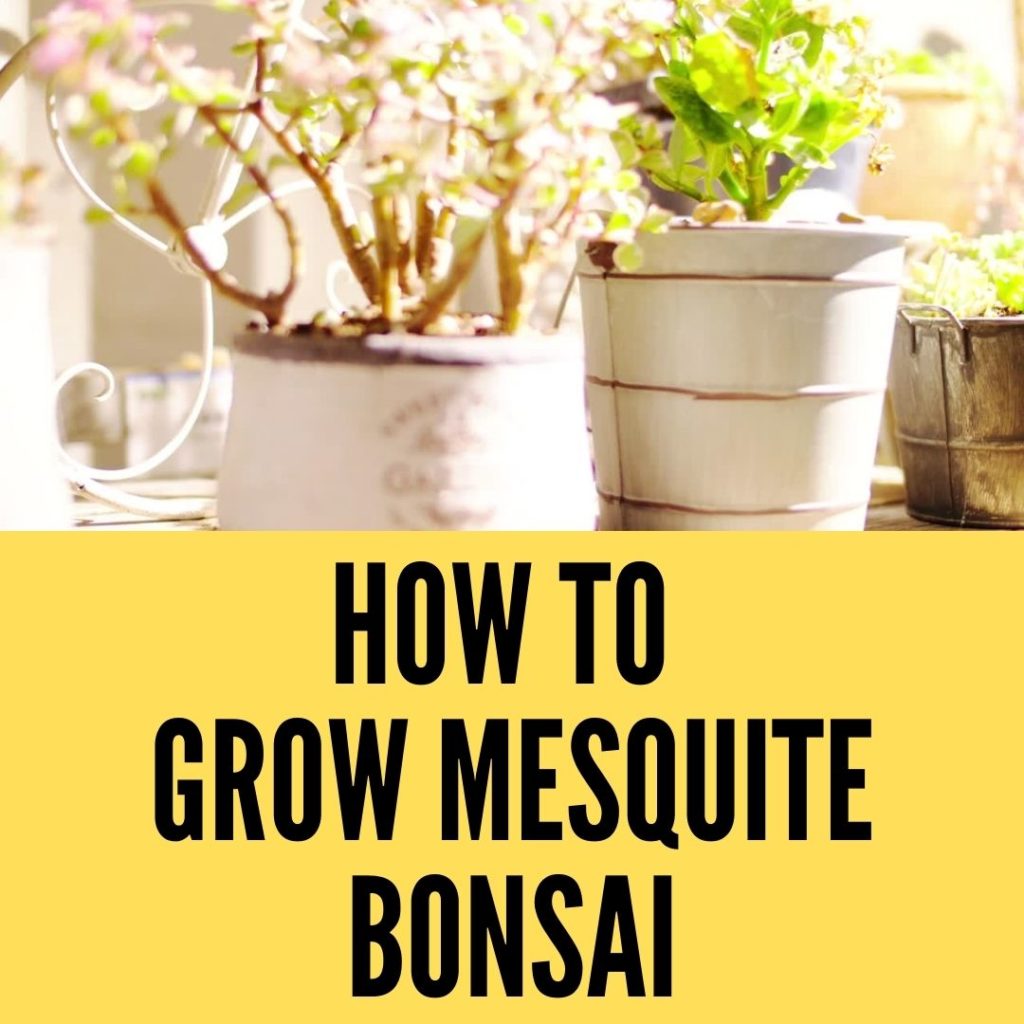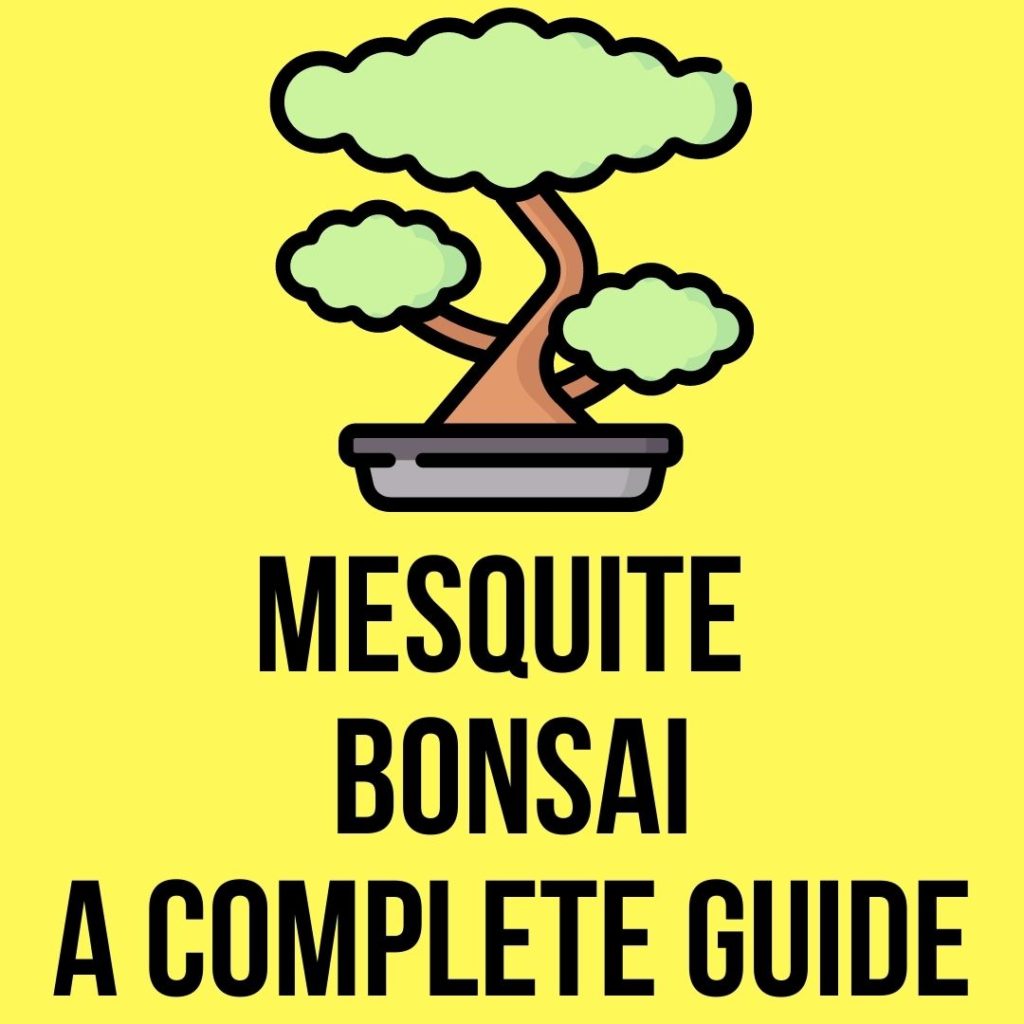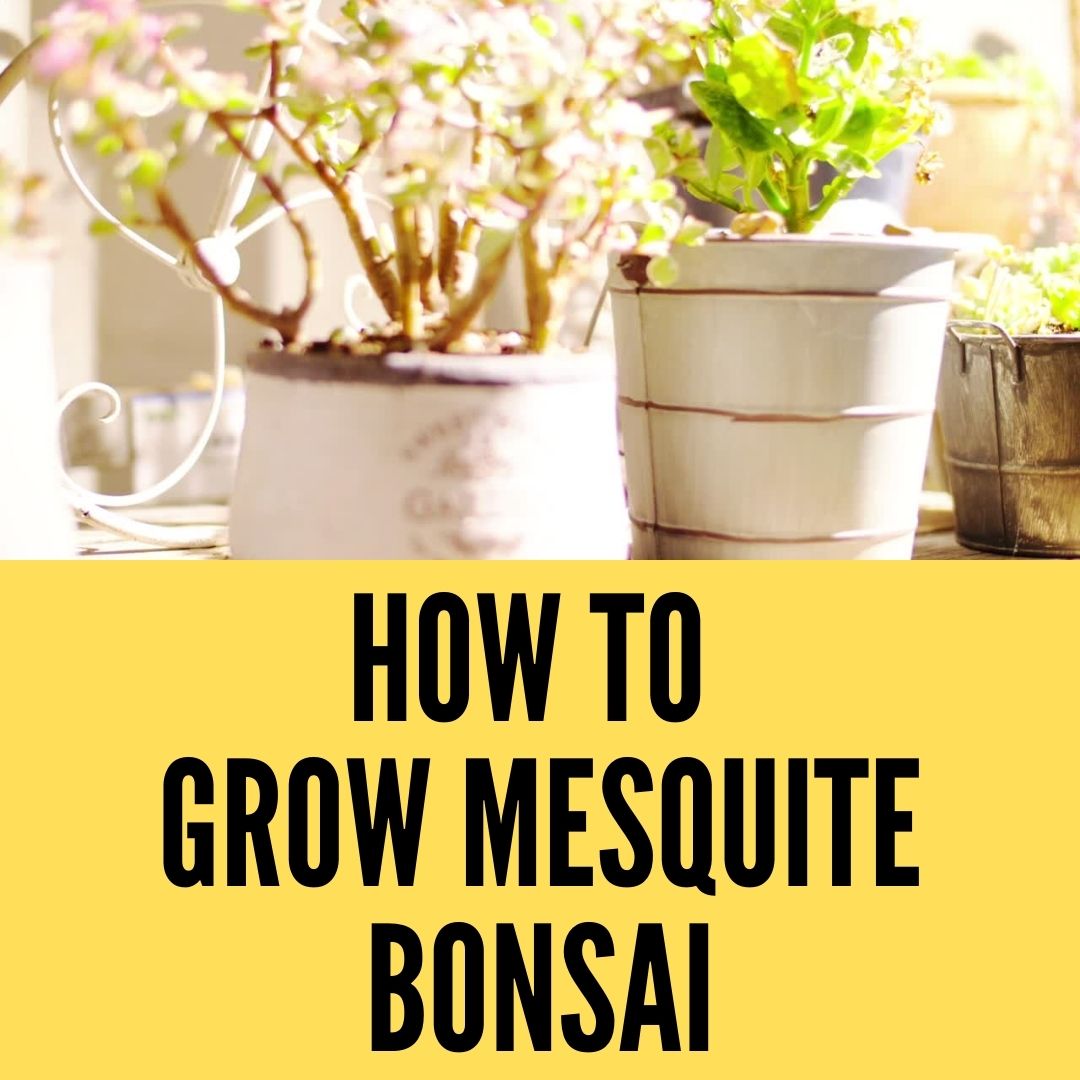Bonsai is the art of growing miniature versions of trees in a pot. The art is ancient and has millions of practitioners around the globe. Bonsai originated in China but evolved and turned into its present form, under the influence of Zen Buddhism.
Let’s see, how to grow Mesquite Bonsai the easy way. We will tell you what mesquite is how to grow its bonsai in the simplest and easiest way.
Mesquite Tree
Bonsai is currently very famous in America and the American practitioners’ experiments with their local plants. The mesquite bonsai is such an example. Mesquite plants are native to America. It is a tree that is found in the desert regions such as Texas, Nevada. The tree grows as shrubs and can survive in heatwaves and droughts.
The tree’s height depends on the environment, it will grow as shrubs in tough places. However, it can reach a height of 50 feet in favorable conditions. The tree is quite common in Texas, Nevada, and other regions of America.
The name mesquite is an umbrella name and has over 40 species under it. They all share similar characteristics like long roots that can gather water from deep, they bloom from spring to summer, and usually produce fruits known as ‘pods’.
The Mesquite Bonsai
There are few successful mesquite bonsai in America. The American bonsai collectors have boundless samples around them and they tried making bonsai out of them. Initially, they faced many difficulties because these were desert trees with taproots and aggressive growth.

However, they managed to hurdle over the obstacles and create mesquite bonsai. We will walk in their steps and try to recreate the success.
How To Grow Mesquite Bonsai
Follow this step by step guide to grow Mesquite Bonsai-
The Soil
The mesquite trees are quite common in Texas and Nevada. There are also online listings for mesquite seeds but it is easier to collect a young tree. Your nearest botanical garden should have them. After procuring a sapling, it is time to plant it. The soil for mesquite bonsai should imitate their natural environment.
Mesquites are desert plants and love sandy soil but it does not mean they do not grow in normal soil. Although it is best to go with sandy soil because it will encourage that short shrub growth. The tree will have a taproot with it and it is best to plant it in a narrow pot.
We will eventually deal with the taproot in later stages. Mix some nitrogen-based fertilizer with the soil to encourage growth and gravel for better drainage.
The Watering
Mesquite trees are desert trees and can survive the harshest conditions. They can do it because of their taproot. The taproot can go very deep and provide the necessary water for the plant. Although for a mesquite bonsai this will not be the same.
For bonsai plants in general the pot is their world, it holds water and nutrients for them. These small pots need to be provided with water daily to make sure the bonsai lives.
In short, the mesquite needs to be given ample amounts of water on a regular basis. The mesquite bonsai should be watered daily but with caution. Too much water can kill the plant or create complications.
It is best to check the dampness of the soil before you water your mesquite bonsai. You can simply use your fingers to check or try lifting the pot to feel the weight. If the weight is very low the water has run dry.
The Positioning
A mesquite tree in nature loves the sun and heat, that does not change as a bonsai. The mesquite tree should be kept outside where it can get plenty of sunlight. It can be put in a 2 to 3 feet high place. The tree can survive in desert conditions so the heat is not a problem. However, it is not suitable for winter. The areas that have harsh winter are not a good match for mesquite bonsai.

The bonsai in winter if possible should be kept inside. In those places, with harsh winter the morning sun would be good for the mesquite but in the nighttime, it should be indoors.
The Trimming And Cutting
Trimming and cutting is necessary action for bonsai. The mesquite bonsai grows as a shrub when it is young. Start cutting the branches you do not want and do not be scared of it. The mesquite trees have strong roots and can survive your usual cutting and trimming. Although do not start aggressive cutting while the tree is very young.
After the cutting process, new buds should start coming out. Cut the first buds that are not needed for your bonsai. The shape of the tree that you envision should come out after the first set of cutting. Then let it grow and trim branches, shoots gradually.
The Repotting
The repotting for your mesquite bonsai should be done once a year when it is young. When the tree is old and tamed you can do it after 2 to 3 years. The repotting basically means trimming roots and planting your bonsai in a bigger pot, if necessary. For mesquite bonsai it has another significance, it is trimming the taproot.
The taproot is a long root that goes quite deep. This root can obstruct repotting or even change the position of the tree. It is best to trim it while repotting to ensure the bonsai’s survival in a pot.
Training And Wiring
It is recommended to start training while the tree is young but it can also harm the tree if not handled by an expert. The wiring is a good way to begin and you should be careful to not break the branches that you want to keep. Start slowly from the base of the tree for support then move up. The wiring should be removed after a few months and do not try to unwind them. Simply cut the wire with a hand trimmer.
Pests And Diseases
The mesquite tree has some natural pests and diseases, they should be the same for mesquite bonsai. The common diseases are slime flux, Ganoderma root rot, powdery mildew, and mesquite borer. The regular use of pesticides, trimming, and caring for your mesquite bonsai should keep these away.
Conclusion
The mesquite bonsai is a good project to pursue if you are knowledgeable about the art of bonsai. The tree might be a hardy tree in nature but in a pot, it needs extensive care. Although with enough time and effort, it can slowly grow into a majestic bonsai that you can be proud of.
